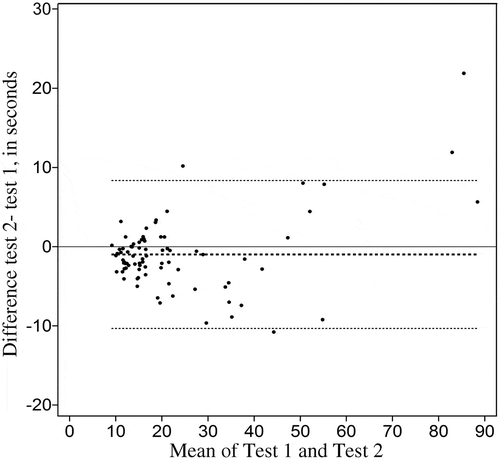Figures & data
Figure 1. Six-spot step test (SSST).
The test starts with the person to be tested standing in the start circle at the end line of the field. A wooden block is placed in the center of each of the remaining circles. The person criss-crosses from one circle to the next and shoves the blocks out of the circles. One leg is used for shoving all the blocks during one walk. The test is then repeated with the other leg shoving the blocks. The test is performed twice for each leg.

Table 1. Baseline characteristics of the 81 participants.
Table 2. Correlations between the six-spot step test (SSST) and the other tests, using Pearson’s correlation coefficient for timed measures and Spearman’s correlations for rating scales.
Table 3. Results of the six-spot step test (SSST) n = 81 performed on two test occasions and showing scores for shoving with the paretic versus the non-paretic limb, and the test–retest results.

